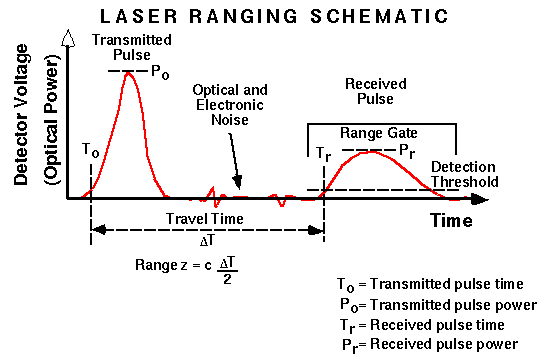

By firing short (~8-ns) pulses of infrared light at the surface and measuring the time for the reflected laser energy to return, dT=Tr-To, MOLA measures the range from the Mars Global Surveyor spacecraft to the tops of Mars' mountains and the depths of its valleys. A telescope focuses the light scattered by terrain or clouds onto a silicon avalanche photodiode detector. A portion of the output laser energy that is diverted to the detector, starts a precision clock counter. The detector outputs a voltage proportional to the rate of returning photons that have been backscattered from Mars' surface or atmosphere. When this voltage exceeds a noise threshold, counts are latched by the time interval unit (TIU). Four separate channels filter the voltage output in parallel to detect pulses spread out by the roughness of terrain or clouds, increasing the likelihood of detection, and providing some information about surface or cloud characteristics. The noise threshold is set by software and, based on statistics from the past 14 seconds worth of returns, minimizes the probability of false hits while maximizing the probability of detection.
While the MOLA-2 instrument is functionally the same as that carried on Mars Observer, we updated the electronics to improve reliability and inthe course of doing so improved overall instrument performance. Time-delay lines enable the measurement of return pulses with two extra bits of precision, that will allow measurement of changes in surface elevation due to polar ice over the course of a martian year. The received pulse energy will measure the infrared reflectivity of the surface. In addition, measurements of the returned laser pulsewidth are providing fascinating information about the 100-meter-scale roughness of the Martian surface.